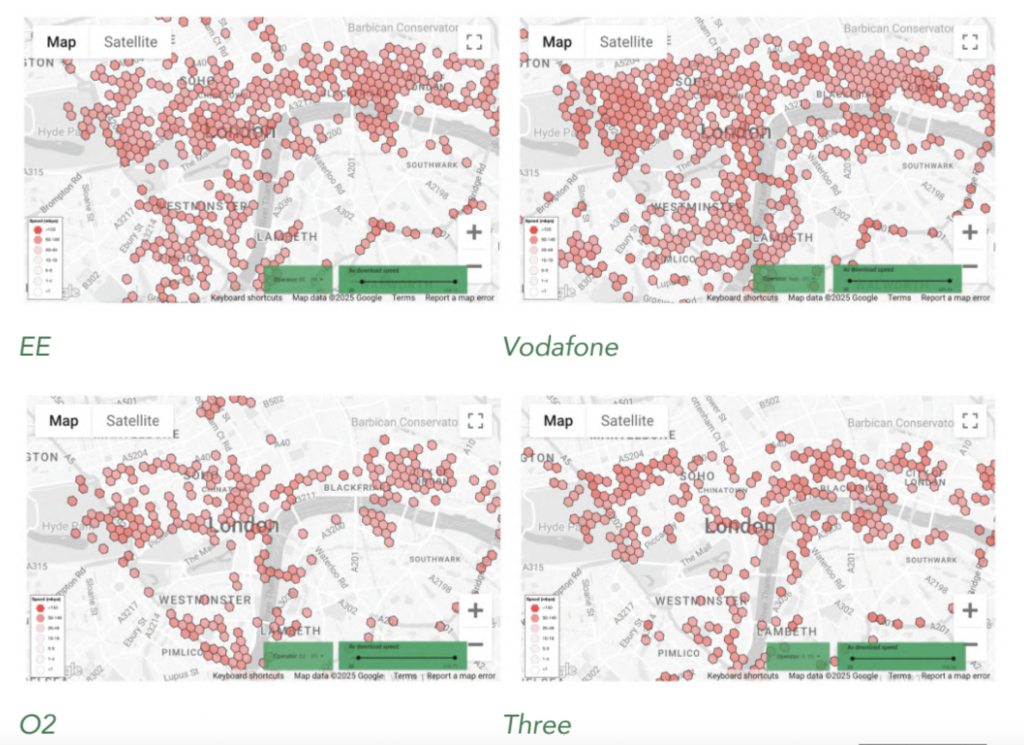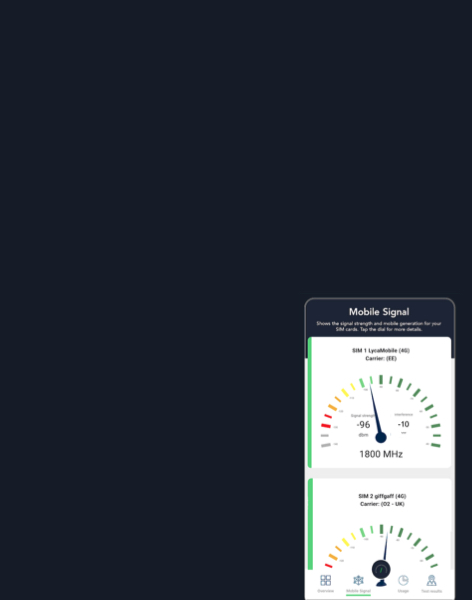How to determine the best network?
PolicyTracker’s partner service, SignalTracker, has published the findings of its research into London’s best mobile network including a downloadable white paper.
For too many people, a night (or day) out in the UK’s capital is characterised by poor connectivity so we used our free app to investigate coverage and signal speed for the four mobile network operators – EE, O2, Three and Vodafone.
The obvious question is how we determined “best”: one metric is download speed, but this is only half the story.
The general agreement is that a solid internet download speed is between 20 Mbps – 40 Mbps. This allows everything from the basics – checking your emails, social media and web browsing to 4K video streaming and online gaming. For standard definition Netflix, all you need is 3 Mbps – 4K requires 25 Mbps and more.
In our article, we note several situations such as needing to download concert tickets, use WhatsApp or use a map that can be impacted easily by bad mobile data. Our tests were standardised by being performed in central London – Westminster to Soho and Southwark to Marleybone.
For Google Maps, all you need is 3 to 5 MB per hour on average, though this increases the further you roam. A 20 Mbps connection is defined by WhatsApp as the required speed needed for a voice or video call.
In contrast, a music steaming service such as Spotify requires a mere 320 KBps to function with “normal” quality, but uses approximately 40 mb an hour.
We decided 20 Mbps was a fair threshold for our speed tests. Anything above is quite stable and particularly with 5G, customers expect speeds to be within range of the maximum 100 Mbps mark. In reality, anything above 50 Mbps means the aforementioned frustrations should not be a problem.
The importance of coverage

The other key factor is coverage – high data speeds are of little use if you walk a few metres and have no signal at all. This is a criticism often made of Three: it’s boasts of London’s fastest network are undermined by inconsistent coverage.
So the two prongs of our methodology are speed and coverage. The easiest way to represent coverage is through a hex map, gridding each of our tests into a framework that exposes the “dead spots” .
Speed may be a fair metric, many would say the most important, but consider the difference between performance in ideal circumstances versus while on the go in the city. From the park to the tube to the streets to the office – every environment is a change in variables that impacts user experience.
Mobile signal can be affected by signal strength; proximity to a mast; obstacles like hills, buildings and trees as well as bad weather. Much of this is locational and emphasises the importance of bringing coverage into perspective. Combining these two categories is why, despite Three demonstrating higher speeds than Vodafone, they were ranked lower for very patchy coverage in central London.
To read SignalTracker article, click here. The full white paper is available here.
